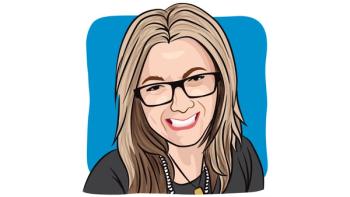
Changing the Norm of Providing Cancer Care
Dr. Cesar Rodriguez has been an outstanding model for championing awareness of health disparities and going the extra mile.
Dr. Cesar Rodriguez has been an outstanding model for championing awareness of health disparities and going the extra mile. He started laying the groundwork forhis passion by becoming an advocate for the Oral Parity Bill while in North Carolina after seeing the inequality of access to oral chemotherapy in minorities and individualswith low incomes.
He then became a faculty of the Maya Angelou Center for Health Equity in Winston-Salem, North Carolina, and promoted grants that helped with financial aid and caretakers for minority and underrepresented patients whowould otherwise would not be able to participate in clinical trials.
He partnered with the Leukemia & Lymphoma Society(LLS) and the Multiple Myeloma Research Foundation(MMRF) to give educational talks in Spanish on the importance of participating in clinical trials, which led to a rise in enrollment of minorities into clinical trials at Wake Forest University. Hisadvocacy with the Black Caucus and drug companies has been heard and he is now a member of Diversity and Inclusion Committees at some of the leading pharmaceutical companies in the myeloma world.
With his transition to Mount Sinai Hospital in New York, he took note of the catchment area and demographics and brought the initiative to reach out to the large Black and Latin American communities in the five boroughs. With the campaign “Instead of you coming to us, we go to you,” he identified Brooklyn and Kings County as the area with highest concentration of minority patients with myeloma and highest death rate related to myeloma.
He established an outreach myeloma clinic with Mount Sinai with the goal of providing access to a specialist and clinical trials within the neighborhood. This program has tackled many obstacles specific for those underserved. Despite having five large myeloma centers in Manhattan, patients in Brooklyn had difficultyaccessing care because they were unable to afford transportation to large academic centers within the city (up to $130 each way), they could not afford to lose a full day’s income given the long commute, they were unable to find someone to care for family members (or one to accompany them) while at the doctor and/orthey lacked health education and access to insurance.
Themyeloma clinic serves a large community of Black, Asian, Latin American, Jewish, and Russian patients. Rodriguezhas built a research team with a nurse, coordinator and fully trained pharmacy and opened four studies. Enrollment in thestudies is composed of 60% minorities, a number far higher than the 5% seen in clinical trials nationwide.
With the help of social workers, advocacy groups such asLLS andMMRF, and pharmaceutical partners, he continues to meet with the Black and Latin American community to explain the role of clinical trials and educate individuals on the importance of health education. This project has trickled into more health awareness in the community and increased referrals to primary care physicians as well as other specialists based on patient needs. Rodriguezhas now presented the clinic model to the Food and Drug Administrationin an attempt to have the government support initiatives such asthis one.
For more news on cancer updates, research and education, don’t forget to





